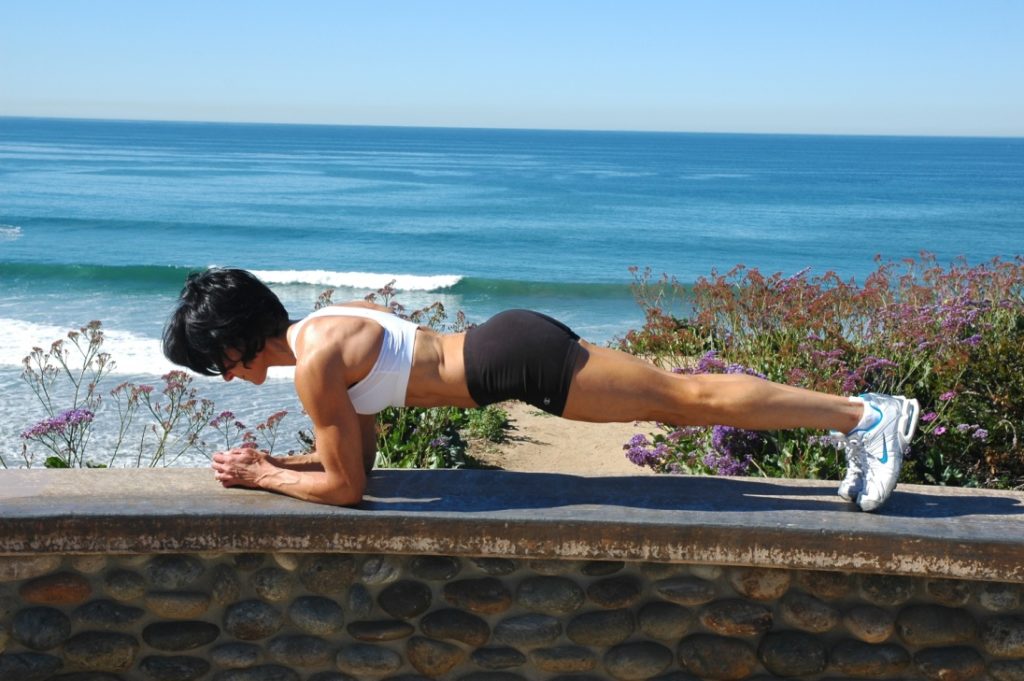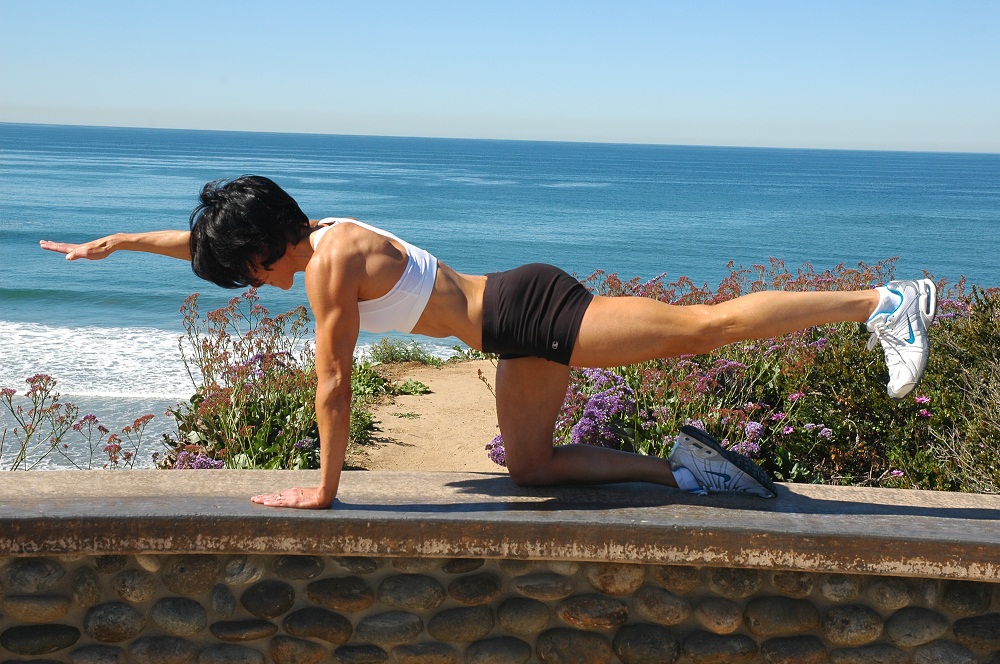All scuba divers have washboard abs — some just have a load or two of laundry resting on top. Whether the muscles are visible or not, divers need their abs to support the back and stabilize the body throughout the complex movements associated with scuba diving. Without question, a balanced abdominal strengthening program is an important component of scuba fitness. Strengthening your abs should happen in conjunction with back strengthening and flexibility. The challenge for divers, when it comes to getting better abs, lies in finding methods that won’t create or aggravate certain back conditions.
While the basic crunch is considered the most effective abdominal exercise, it is not always an option for divers with upper back, neck and shoulder conditions or weakness. Divers with bulging discs and/or lower-back complications may also find ball exercises difficult or contraindicated to their condition. Contrary to popular belief, it is never appropriate to place an unstable torso on an unstable apparatus. Numerous studies demonstrate, with the exception of the oblique abdominals, that all abdominal wall muscles engage at a greater intensity when performing exercises on benches or solid surfaces rather than on exercise balls.
Potential back problems include misalignment from accident or injury, skeletal deviations such as scoliosis, degeneration and disease such as arthritis, and pain from tight hamstrings, lack of physical activity, and/or muscle imbalances. Divers can work around these issues with a few basic crunch modifications and some efficient abdominal exercises. These not only improve the overall condition of your back, but also allow you to safely pursue that legendary six-pack.
Remember: strengthening the abdominals and reducing body fat around the torso are due to distinctly different types of training. Aerobic exercise is the key to making the abdominals lean, while resistance training strengthens the abdominal muscles.

Working the abdominal walls
Yes, there are two. Dominating the torso as the muscular center of the body, the anterior (front) abdominal wall is designed for high repetitions, flexion of the spine, assisting bodily functions of elimination, and stabilization of the body in all directions of movement. The anterior abdominal wall is comprised of three integrated muscular layers. The transversus abdominis (TA) is the deepest of the three. The oblique abdominals (OA) (the serratus anterior, internal and external obliques) function synergistically for torso rotation and stabilization; and the rectus abdominis (RA) is aligned vertically in the center of the torso. Although surrounded by other muscular layers, the RA is most recognized as the six-pack because the thickness of the muscle and its tendon segments make it visible on lean torsos.
The anterior abdominal wall muscles synergistically contract and stretch, along with the posterior abdominal wall muscles when the spine’s joints flex and extend in various directions in response to movements of the arms and legs. The posterior (back) abdominal wall consists of the Iliopsoas (psoas major, minor and iliacus) and the quadratus lumborum (QL). The Iliopsoas is both a flexor of the hip joint and the lumbar spine. A weak Iliopsoas may contribute to low back pain. The QL flexes and extends the lumbar spine in various directions and is involved with respiration as it secures the 12th rib.

About Respiration
It’s important to integrate deep breathing into all exercise programs. Practicing deep breathing during abdominal exercises is an excellent opportunity for divers to focus on recruiting the diaphragm muscle (responsible for 75 percent of respiratory air flow) and the intercostal muscles, which move the ribs (resulting in 25 percent of respiratory effort).
The quadraplex and plank exercises require you to stabilize the body by engaging both abdominal walls, along with all other muscles of the body. While you can distribute the effort for this total-body exercise throughout the body, you should feel the greatest sensations in the anterior abdominal wall. If the low back cramps or aches during this exercise, reduce the amount of time in this position. Practice the quadraplex for at least one minute on each side without discomfort before progressing to the plank. Practice deep breathing throughout the duration of the exercise.

Tips for Success:
- Warm up with 10 minutes of aerobic exercise.
- Gently stretch the back before performing torso exercises.
- Begin with an abdominal contraction.
- Breathe deeply, exhaling on the exertion.
- Use pads or towels to support the spine.
- Let strength and proper form dictate range of motion.
Exercise: quadraplex and plank
- Beginner: Perform the quadraplex lying on the stomach for more support of the torso.
- Intermediate: Perform the quadraplex on hands and knees.
- Advanced: Perform the plank in the low or high position, holding for one minute
Challenge: Perform the plank while transitioning from bent arm to straight arm and repeat for one minute.

